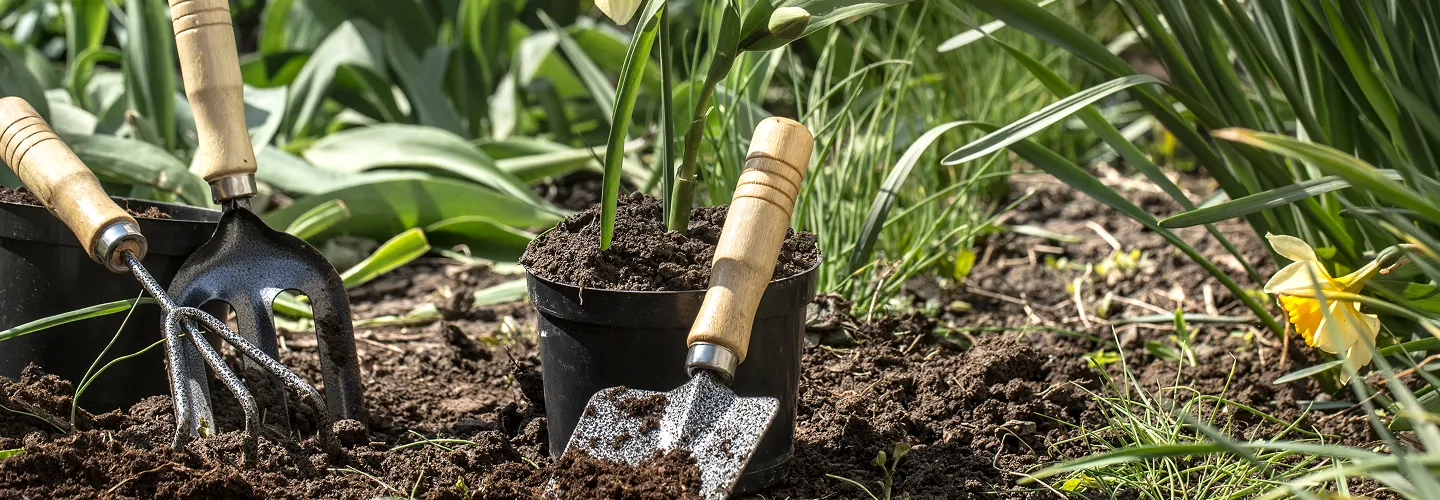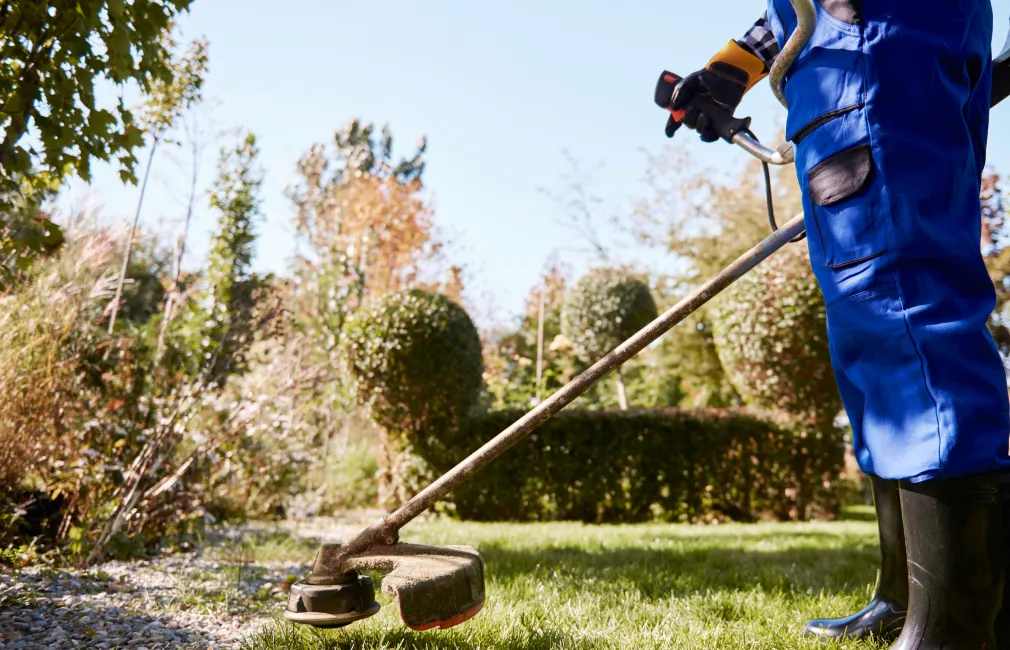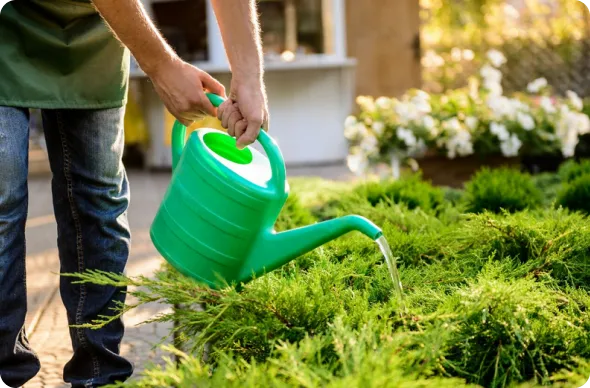
Holbrook Dethatching Lawn Services
Choose our dethatching lawn services for a healthier, greener yard—our experienced team removes built-up thatch to promote stronger roots, better water absorption, and a lush, vibrant lawn you’ll love.
Get a Free QuoteWhen to Schedule Dethatching Lawn in Holbrook, MA – Seasonal Guide
In Holbrook, MA, the best time to schedule lawn dethatching is typically in early spring or early fall, when grass is actively growing and can recover quickly. Holbrook’s climate, with its cold winters and humid summers, means that dethatching too early or late in the season can stress your lawn. For neighborhoods near Pine Street or close to the Holbrook Town Forest, where shade and moisture levels vary, timing is especially important to avoid damaging turf during periods of frost or drought.
Local environmental factors such as the average last frost date in April, the risk of summer drought, and the prevalence of clay-heavy soils in areas like the South Franklin Street corridor all play a role in determining the optimal dethatching window. Homeowners should also consider municipal guidelines and seasonal updates from the Town of Holbrook’s official website before scheduling service.
Local Factors to Consider for Dethatching Lawn in Holbrook
- Tree density and shade coverage, especially in neighborhoods with mature maples and oaks
- Soil type and drainage, with clay soils requiring different timing than sandy areas
- Recent precipitation patterns and risk of drought
- Proximity to wetlands or low-lying areas prone to excess moisture
- Municipal restrictions or recommendations on lawn care activities
- Terrain and slope, which can affect water retention and grass recovery
Benefits of Dethatching Lawn in Holbrook

Improved Lawn Health
Enhanced Grass Growth
Increased Water Absorption
Reduced Pest and Disease Risk
Boosted Curb Appeal
Professional Landscaping Expertise

Holbrook Dethatching Lawn Types
Cool-Season Grass Dethatching
Warm-Season Grass Dethatching
Residential Lawn Dethatching
Commercial Lawn Dethatching
Sports Field Dethatching
Golf Course Dethatching
Park and Recreation Area Dethatching
Our Dethatching Lawn Process
Lawn Evaluation
Preparation and Marking
Dethatching
Cleanup and Disposal
Post-Dethatching Inspection
Why Choose Holbrook Landscape Services

Holbrook Homeowners Trust Us
Expert Lawn Maintenance
Competitive Pricing
Professional Team
Satisfaction Guarantee
Personalized Service
Reliable Scheduling
Contact Holbrook's Department of Public Works for Dethatched Material Disposal & Yard Waste Collection
Holbrook's compact South Shore township character drives efficient organic debris handling systems that accommodate intensive residential maintenance within limited geographic boundaries. Municipal waste operations coordinate streamlined collection schedules and operate accessible drop-off facilities specifically engineered to process concentrated dethatching volumes while maintaining environmental compliance throughout this densely developed Norfolk County community.
Holbrook Department of Public Works
50 North Franklin Street, Holbrook, MA 02343
Phone: (781) 767-4312
Official Website: Holbrook Department of Public Works
Optimal organic material processing requires residents to follow established preparation protocols that maximize municipal composting effectiveness while supporting township sustainability objectives:
- Package lawn debris exclusively in certified biodegradable paper containers; synthetic materials violate state organic waste regulations and compromise township composting operations
- Remove all foreign substances including stones, soil chunks, construction debris, and urban litter that interfere with high-density processing equipment
- Follow published weight restrictions and container specifications for both compact township collection routes and Transfer Station operations
- Monitor municipal communications for schedule modifications during weather events and peak maintenance cycles
- Position materials to preserve emergency access and prevent storm drainage infrastructure obstruction in dense residential areas
Understanding Thatch Buildup in Holbrook's Glacial Till Uplands & Compact Township Development Conditions
Holbrook's distinctive geological foundation creates specialized growing environments that dramatically influence thatch development across this compact South Shore township. USDA Web Soil Survey mapping identifies varied formations including Paxton and Charlton fine sandy loam on glacial till uplands with restrictive hardpan layers, Hinckley and Windsor sandy soils in scattered outwash pockets, Scituate fine sandy loam on moderate slopes, and Urban land complexes where intensive township development has modified natural substrates throughout this established community.
University of Massachusetts Extension Center for Agriculture, Food and the Environment
161 Holdsworth Way, Amherst, MA 01003
Phone: (413) 545-2717
Official Website: University of Massachusetts Extension
Compact township development generates intensive challenges for thatch management throughout Holbrook's residential neighborhoods. Glacial till substrates often develop compacted conditions with restrictive hardpan layers that limit oxygen penetration essential for beneficial decomposition organisms. Dense residential development creates concentrated foot traffic patterns and restricted air circulation that compound organic matter accumulation, while proximity to neighbors necessitates careful timing and technique selection. Seasonal hardpan formation during wet periods can create alternating aerobic and anaerobic conditions that preserve rather than decompose accumulated organic debris.
Properties where thatch accumulation exceeds the critical 0.5-inch threshold develop cascading problems including impaired water infiltration, restricted nutrient availability, and increased vulnerability to disease pressures common in compact residential environments. Township residents should monitor for springy surface texture, water beading during irrigation, patchy fertilizer response, and moss expansion as indicators requiring intervention.
Key practices for managing thatch in Holbrook's conditions include:
- Timing operations during early spring or fall windows when cool-season grasses recover rapidly in township microclimates
- Coordinating cultivation services addressing compaction from township development and restrictive glacial till hardpan layers
- Selecting grass varieties adapted to compact residential conditions and variable drainage from modified township substrates
- Implementing moderate nutrition programs preventing excessive growth while maintaining neighborhood landscape standards
- Establishing immediate ground coverage following dethatching using varieties suited to Holbrook's diverse glacial and township terrain
Reference: USDA Web Soil Survey
Holbrook Conservation Commission Requirements for Dethatching Near Wetlands & Protected Areas
Holbrook's network of Cochato River tributaries and township conservation areas necessitates comprehensive environmental coordination for lawn maintenance throughout this compact South Shore community. The Massachusetts Wetlands Protection Act establishes protective buffer zones extending 100 feet from wetland boundaries and 200 feet from waterways, affecting properties near the Cochato River, Great Pond, Holbrook Pond, and numerous tributary systems that characterize the township's water resources.
Holbrook Conservation Commission
50 North Franklin Street, Holbrook, MA 02343
Phone: (781) 767-4312
Official Website: Holbrook Conservation Commission
Wildlife habitat protection assumes heightened importance during April through July breeding seasons when diverse species utilize township pond systems, river corridors, and conservation margins throughout Holbrook's developed landscape. Properties adjacent to Holbrook Town Forest, Great Pond conservation areas, or township recreational facilities with natural features must implement rigorous erosion control preventing sediment migration into sensitive aquatic ecosystems supporting both community recreation and ecological diversity.
Major dethatching operations within regulated buffer zones typically require environmental review through Request for Determination of Applicability or Notice of Intent procedures. Manual techniques and specialized low-impact equipment are strongly recommended near Cochato River systems and township pond areas to minimize soil disturbance while protecting resource integrity essential to Holbrook's compact community environmental character.
Holbrook's Implementation of Massachusetts Organic Waste Regulations for Dethatched Material
State requirements under Massachusetts General Law Chapter 111, Section 150A mandate organic waste diversion from household refuse systems, creating opportunities for innovative compact township composting programs serving Holbrook's dense residential development patterns. The town has established comprehensive organic material management systems addressing unique challenges of intensive township development while supporting community-wide environmental sustainability objectives.
Massachusetts Department of Environmental Protection
One Winter Street, Boston, MA 02108
Phone: (617) 292-5500
Official Website: Massachusetts Department of Environmental Protection
Massachusetts Department of Agricultural Resources
251 Causeway Street, Suite 500, Boston, MA 02114
Phone: (617) 626-1700
Official Website: Massachusetts Department of Agricultural Resources
Compact township composting initiatives provide organic waste processing opportunities where property dimensions allow, though dense neighborhood conditions typically necessitate municipal collection services. Residential composting in Holbrook's intensive development environment must consider neighbor relations and comply with health regulations preventing nuisance conditions while maintaining appropriate setbacks from Cochato River tributaries and property boundaries throughout this township environment.
Municipal collection operates with consistent scheduling accommodating compact township demands while maintaining Massachusetts General Law Chapter 111, Section 150A compliance through regional processing partnerships. Technical guidance from the Massachusetts Department of Agricultural Resources supports sustainable practices complementing township landscape management and environmental stewardship priorities.
Post-Dethatching Stormwater Management in Compliance with Holbrook's MS4 Program
Holbrook's Municipal Separate Storm Sewer System obligations emphasize comprehensive Cochato River watershed protection throughout the township's compact residential and commercial drainage infrastructure. National Pollutant Discharge Elimination System standards mandate rigorous pollution prevention during soil-disturbing activities, with enhanced requirements for township areas contributing to regional waterway protection within the broader South Shore watershed network.
U.S. Environmental Protection Agency, Region 1
5 Post Office Square, Suite 100, Boston, MA 02109
Phone: (617) 918-1111
Official Website: U.S. Environmental Protection Agency, Region 1
Compact township weather monitoring becomes essential before conducting dethatching operations, particularly regarding storm development affecting dense residential drainage systems and Cochato River flood patterns. Property owners should consult National Weather Service Boston forecasts and halt operations when precipitation threatens within 24 hours. Post-dethatching stabilization requirements include:
- Swift establishment of protective ground coverage within 24 hours using seed varieties adapted to compact township conditions and Cochato River watershed environments
- Strategic nutrient management preventing excess applications that contribute to township runoff and regional water quality impairment
- Careful irrigation scheduling supporting establishment while preventing runoff into Holbrook's dense township storm drainage networks
- Coordinated soil improvement addressing compaction from township activities and glacial till hardpan characteristics
- Installation of temporary erosion barriers on slopes and areas near conservation lands vulnerable to storm-related soil displacement
These comprehensive measures ensure Clean Water Act and EPA NPDES compliance while supporting turf recovery in Holbrook's challenging compact township environment.
What Neighborhoods Do We Serve Throughout Holbrook, MA?
Holbrook's residential districts present diverse thatch management challenges reflecting varied glacial terrain, township development patterns, and water resource proximity throughout this South Shore community.
North Franklin Civic Core encompasses traditional township center areas with mature landscapes and potentially compacted soils from decades of civic activities. Proximity to municipal facilities and established commercial areas creates distinctive microclimate conditions while limited space between buildings often requires specialized manual techniques for effective maintenance throughout this township center.
Union Street Transit Corridor includes mixed residential and commercial development along major transportation routes with altered soil conditions from infrastructure activities. Properties may experience winter de-icing salt damage affecting spring recovery while heavy foot traffic creates compaction requiring combined dethatching and aeration services throughout this transportation spine.
Great Pond Watershed District encompasses properties adjacent to this significant water resource with distinctive growing conditions from pond proximity and seasonal water table fluctuations. Enhanced humidity from pond influence affects decomposition rates while strict watershed protection requirements necessitate careful nutrient management during maintenance activities throughout this critical water resource area.
West Holbrook Glacial Till Uplands feature residential development on elevated terrain with restrictive hardpan layers creating challenging drainage conditions. Properties experience seasonal water perching above hardpan during wet periods while rapid surface drying occurs during summer months, requiring specialized approaches addressing both extremes throughout this glacial formation district.
East Holbrook Outwash Pockets include scattered areas with excessively drained sandy soils contrasting sharply with surrounding till areas. Properties experience rapid moisture loss that can inhibit decomposition during drought periods while requiring intensive irrigation management for successful post-dethatching recovery throughout these isolated sandy zones.
Holbrook Town Forest Interface encompasses residential development adjacent to significant woodland areas with challenging growing conditions from forest proximity and continuous organic matter input. Heavy shade and acidic leaf litter favor moss development while conservation considerations influence maintenance timing throughout this forest-residential transition zone.
South Street Residential Neighborhoods feature established areas with varied soil conditions from glacial deposits to township fill materials. Properties may experience diverse drainage characteristics requiring customized maintenance approaches while coordinating with established utility networks and mature landscape systems throughout this traditional residential district.
Holbrook Municipal Bylaws for Landscaping Operations & Equipment Use
Municipal ordinances governing landscaping operations in Holbrook establish comprehensive standards reflecting the township's compact character while ensuring environmental protection for Cochato River systems and township conservation areas. These regulations establish operational standards appropriate for dense residential communities supporting both neighborhood tranquility and professional service access.
Holbrook Building Department
50 North Franklin Street, Holbrook, MA 02343
Phone: (781) 767-4312
Official Website: Holbrook Building Department
Holbrook Board of Health
50 North Franklin Street, Holbrook, MA 02343
Phone: (781) 767-4312
Official Website: Holbrook Board of Health
Township considerations establish operational schedules accommodating residential neighborhood character while maintaining professional service efficiency throughout this compact community. Commercial service providers must maintain comprehensive insurance coverage appropriate for township property values while demonstrating environmental compliance capabilities for Cochato River watershed and township conservation area protection.
Equipment operation standards address unique compact township challenges including navigation of narrow residential streets, protection of underground utilities serving established neighborhoods, and coordination with municipal services. Service providers must demonstrate competency in glacial till soil management while maintaining effective thatch removal capabilities in diverse substrates affected by township development and restrictive hardpan conditions.
Major dethatching projects near Cochato River systems, township conservation areas, or Great Pond vicinity typically require coordination with multiple municipal departments ensuring compliance with compact township environmental protection standards. Professional operators must maintain current training in township community best management practices while ensuring successful turf establishment in Holbrook's complex compact residential environment with its integrated neighborhood demands and comprehensive watershed protection requirements.